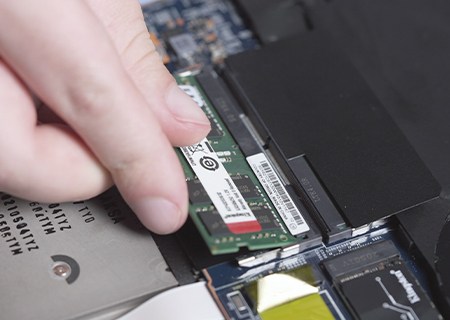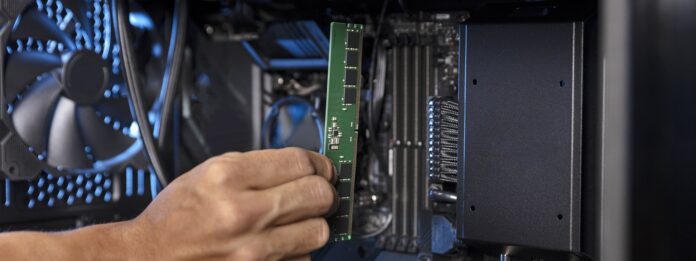Business computers: should they be upgraded?
Buying a whole bunch of new computers for your business may seem like a great idea. But for IT managers on a tight budget, this isn’t always a realistic option.
Conversely, upgrading RAM (random access memory) can be a cost-effective solution that results in faster, more efficient computers, which translates into a more productive workforce.
In this article, we will discuss the factors to consider before upgrading in order to get the best possible solution.
Maximize performance: Smoother multitasking and faster loading times with additional RAM.
It’s no secret that computers can slow down over time. This is because applications require more resources and employees have to do more with less, much to their frustration.
But there are ways to breathe new life into these computers. Upgrading the RAM for HP, Lenovo, Acer or Dell laptops and desktops can improve their speed, performance, and ability for multitasking.
RAM is a very efficient temporary data storage. It serves as a ‘buffer’ between the processor and the hard disk (HDD) or SSD.
Today’s scalable laptops and desktops use DDR SDRAM (double data rate synchronous dynamic random access memory) technology, currently available in generations 3, 4, and 5 (aka DDR3, DDR4, DDR5).
RAM requires power to hold data. Also, when the computer is turned off, everything that was in RAM is saved in storage (HDD/SSD).
The more RAM capacity the processor has, the faster applications and data can be retrieved from storage.
If your staff frequently uses multiple applications and opens large files simultaneously, adding RAM can significantly improve their productivity.
Evaluate needs and choose the right RAM solution
Important Factors to Consider When Upgrading the RAM of Lenovo, Dell, Acer, or HP Laptops and Desktops

To check a computer’s memory usage, simply press Ctrl + Shift + Esc to launch Task Manager.
Task Manager is a program built into Windows that helps monitor and manage various aspects of computer performance, including memory usage.
Once Task Manager opens, you can select the “Performance” tab at the top of the window to view a graphical representation of your computer’s CPU, memory, disk, and network usage.
In the “Memory” section, you can see the amount of memory (RAM) currently used by your system, as well as the available capacity. Note that even if it appears to be plenty of capacity available, this can be misleading.
Windows constantly caches (temporary storage) applications and data that are supposed to be in random access memory (RAM) on the hard drive/SSD when the physical capacity of the installed RAM is not sufficient to support all applications that must be opened.
Windows reserves storage space (HDD/SSD) called “virtual RAM” or “Pages file” where data can be cached.
Below the graph, the amount of “Cached” data is shown, next to the total amount of “Committed” capacity.
Total committed capacity is the amount of virtual RAM that Windows has reserved. It can be a good indication of how much physical RAM is needed. Virtual memory usage and data caching to storage are the factors that slow down the computer while multitasking.
To assess how much physical RAM is needed, when Task Manager is open, users should open the applications and data files they use most often to see how much RAM is left and how much is needed. hidden.
The “Processes” tab is also useful for seeing which applications are active in RAM. The “Memory” column can also be sorted to see which applications are using the most memory, usually measured in MB (megabytes).
When upgrading RAM for Lenovo, Dell, Acer or HP laptops and desktops, it is important to review the current memory installation and requirements for adding or replacing Memory.
Except ultra-thin laptops, which may have only one memory socket available, and high-end desktops/workstations, almost all scalable laptops and desktops use an architecture of dual channel memory.
This involves combining two identical memory modules to double their performance. This is the optimal configuration for Intel and AMD processors.
Where possible, mixing memories of different speeds and capacities should be avoided, as this can result in lower memory performance, sacrificing potential bandwidth.
Kingston simplifies this process by offering RAM solutions that are 100% equivalent to the options offered by the original system manufacturer.
Their compatibility is guaranteed and the configurator provides details on the upgrade process and important installation notes for each system.



